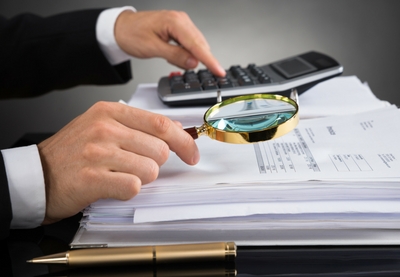Reverse Sales Tax Audits
By Christopher R. Cicalese, CPA, Alloy, Silverstein, Shapiro, Adams, Mulford, Cicalese, Wilson & Co. –
December 8, 2016

Audit notices make practitioners cringe, because taxing authorities often find something that the practitioner could not possibly have known without being involved in the client’s day-to-day operations. Performing a reverse sales tax audit provides a great opportunity to avoid surprises and to potentially recover tax dollars for the client.
What Is a Reverse Sales Tax Audit?
In a traditional sales tax audit, state auditors are examining the taxpayer for sales and use tax, searching for underpayment of tax. During the audit, state auditors may offset any underpayments of tax with overpayments they find, but they rarely offer refunds in the event of a net overpayment. Reverse sales tax audits are the opposite: Their objective is to find an overpayment of tax. Reverse sales tax audits are typically performed by a tax practitioner who has a range of experience in the client’s industry. The client’s transactions are examined to look for instances when sales or use tax was paid on an exempt item or service. At the conclusion of a reverse sales tax audit, taxpayers can apply for a refund of the overpayment — or offset any underpayments that the taxing authority finds if the reverse audit is being performed simultaneously with a traditional audit.
Why Perform an Audit?
Typically, a traditional sales tax audit uncovers costly mistakes made by vendors or flaws within a client’s accounting system. Often, taxing authorities find their next taxpayer to audit from a vendor invoice that failed to correctly charge sales tax. Reverse audits provide similar results and give clients the opportunity to have their vendors’ invoices reviewed for accuracy. Providing a sales tax exemption certificate to a vendor does not guarantee that the vendor’s accounting department will appropriately not charge sales tax. At the same time, as the vendor’s accounts receivable department goes through personnel and software changes, there is always the chance that sales tax will be charged in error even if the invoices have been correct for many years.
While reviewing a client’s accounting system for overpayment of sales tax, practitioners may be able to identify instances where sales tax was not collected correctly. Although this is not the goal when performing a reverse sales tax audit, it does provide the opportunity for a client to correct and improve an issue that will help reduce a possible assessment in a future audit.
Performing an Audit
The beginning of a reverse sales tax audit should be conducted similarly to a taxing authority’s audit. It is important to learn about the client’s business, its flow of transactions and how it operates so that there is a better understanding of how the taxpayer consumes purchases. During the interview stage of the audit, practitioners can often identify major suppliers and large purchases on which to focus particular attention. This process allows practitioners to determine many things, such as whether or not any purchases are being resold to customers, a common sales tax exemption. Fixed-asset purchases are usually a major component that taxing authorities focus on and should also be considered during reverse audits.
Perfect Timing for an Audit
The biggest risk in requesting a refund of overpaid tax is the possibility of triggering a normal audit. States are not quick to pay refunds to taxpayers, so applying for a refund of sales tax may put the taxpayer on the state’s radar. To avoid any red flags, the best time to perform a reverse audit is when the taxpayer is about to undergo a sales and use tax audit by the taxing authority. During regular and reverse audits, the same information is requested and similar steps are performed. While the auditor may find underpayments, the practitioner can find overpayments that can be used to directly offset the auditor’s findings. At the end of the audit, if the overpayments exceed the underpayments, the taxpayer can request a refund knowing that the state just completed a sales and use tax audit with a favorable assessment.
Claiming a Refund
In New Jersey, to claim a refund, the taxpayer must file Form A-3730 within four years of the date the sales tax was paid, which coincides with the statute of limitations for the state. An explanation of claim must be included; be sure to reference the section of the New Jersey Tax Code that covers the exemption if possible. A prime example of an exemption is when a New Jersey taxpayer purchases machinery or equipment for use directly or primarily in the manufacturing of property. Include this explanation on the form along with other details. Provide supporting documentation with the form to substantiate the claim for a refund. In this case, include an invoice showing the purchase of equipment and payment of sales tax.
What to Provide to the Client
As with many client services, it is important to provide clients with something tangible, such as a written report. Within the report, describe the procedures followed and any significant findings. You can include work paper schedules to provide specific findings of the audit. In addition, give recommendations to improve the client’s processes and weaknesses, to provide more value to the client.
Getting Paid
As there is no certainty of finding overpayments, many firms perform reverse audits under a contingent fee arrangement. While this usually is not allowed by the professional standards, the AICPA does permit contingent fees under the circumstance that the “taxing authority has established procedures for substantive review of such refund requests.” In addition to contingent fees, other fee structures can be hourly, flat or hybrid. It is important to note that if the circumstances permit a contingent fee arrangement, the percentage is charged on the net amount of the tax recovered.
 | Christopher R. CicaleseChristopher R. Cicalese, CPA, MSTFP, is an associate partner at Alloy Silverstein Accountants and Advisors. He is a member of the NJCPA. More content by Christopher R. Cicalese: |
This article appeared in the November/December 2016 issue of New Jersey CPA magazine. Read the full issue.